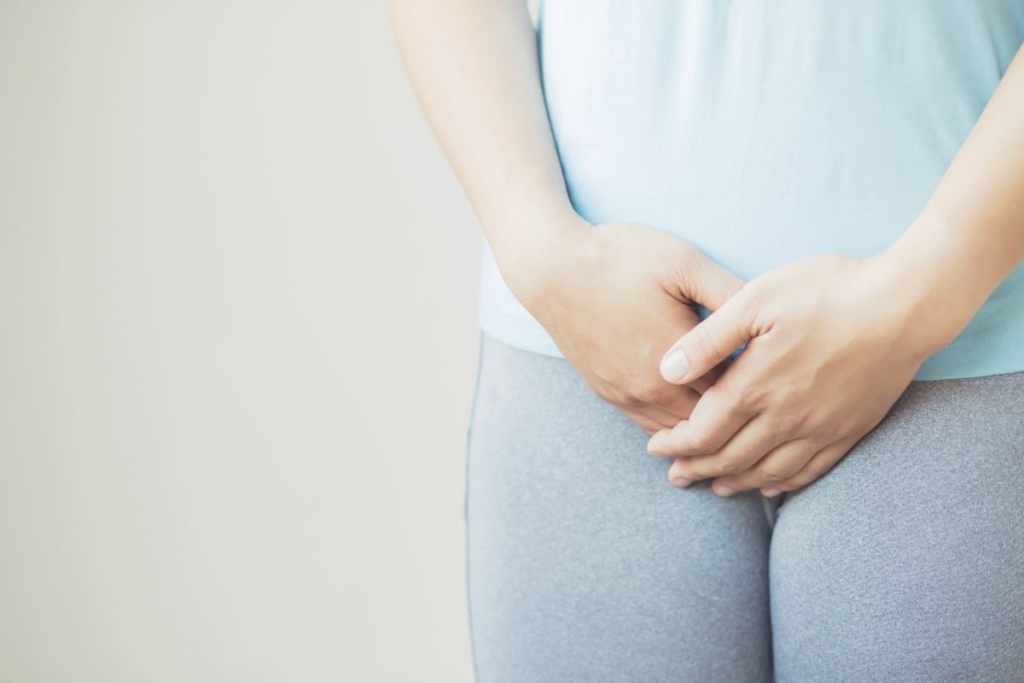The vagina is a very sensitive ecosystem. It is self-cleansing, and has its own pH balance. When this balance is thrown off, it can lead to various afflictions and infections such as BV or a yeast infection. When your vagina feels different, is itching, dry, or causing you discomfort, it can really impact your life and wellbeing. I think everyone who has experienced it, will agree!

You may find urinating painful, sex can be uncomfortable, and you may notice that your discharge has a strange scent. All of these things can be embarrassing to deal with, but it is natural, and happens to many women from all walks of life.
The most common vaginal issues and disorders that affect women of all ages are bacterial vaginosis (BV) and yeast infections. It is important to note that while these two conditions may have some symptoms in common, they are different, and will need different treatments. But what exactly are these differences and similarities. Well, that’s exactly what we are about to discuss!
What Is Vaginitis?
Both yeast infections and bacterial vaginosis fall under the category of vaginitis. Vaginitis is a term used for a range of disorders that affect the vagina. These disorders can cause pain, discomfort and inflammation of any part of the vaginal area, from the vulva to the vagina itself.
While vaginitis can include disorders like sexually transmitted diseases, bacterial vaginosis and yeast infections are not categorized as sexually transmitted diseases themselves, however they can be aggravated by sex.
So what sets bacterial vaginosis apart from yeast infections? Let’s find out.
What Is Bacterial Vaginosis?
Bacterial vaginosis also known as BV is a type of infection that forms when there are various unusual bacteria found in the vagina. Bacterial vaginosis is one of the most common vaginal disorders that many women will face. Around 30% of women will experience BV in their lifetime.
Some women may not experience symptoms at all, but the most common symptoms that you may notice is unusual discharge and a fishy scent to this discharge.
Causes
Bacterial vaginosis can be caused by a range of factors. Some common causes are frequent douching, as these cleansers can actually strip the vagina of its naturally occurring bacteria, and cause infection. Other causes include frequent intercourse, especially when it is with more than one partner. Now, BV is not an STI, but when an individual has sex, especially penetrative sex, it can introduce new bacteria into the vagina, which leads to a bacterial infection such as BV.Bacterial vaginosis can also be spread between women, especially if one has BV. It can also be caused by overwashing the vagina, and smoking.
BV occurs when there is an imbalance of good and harmful bacteria in the vagina. So, lots of things like not using condoms, using new lubricants, using vaginal sprays and washes can upset the balance of the vaginal microbiome.
Symptoms
Symptoms of bacterial vaginosis can vary from person to person. However, there are some common symptoms to look out for. These are:
- Thin gray or white vaginal discharge
- Strong fishy odor, particularly after sexual intercourse or when urinating
- Itching in the vagina
- Pain or burning in the vagina
- Burning and discomfort when urinating
- Itching outside of the vagina
Treatment
If you have BV, it will need to be treated. While bacterial vaginosis can go away by itself in some cases, it is best to treat the infection as it can come back time and time again. BV is typically treated with antibiotics, gels, or creams. These will likely need to be prescribed by a medical professional, so you will need to speak to a doctor or nurse. After antibiotics, BV will usually go away within a few days. As mentioned BV can also spread between partners. So, it is a good idea for your partner to seek treatment too.
What Is A Yeast Infection?

Much like other vaginal issues, yeast infections are also caused by an upset in the balance of the vagina. When the bacteria in the vagina is in the presence of another bacteria such as candida albicans, it can lead to yeast infections. An overgrowth of candida or penetration of this fungus into the vagina can cause a yeast infection. A yeast infection is often more uncomfortable than BV.
Yeast infections can cause redness and swelling of the vagina, along with intense itching and discomfort. Yeast infections are typically more easily recognizable, as they cause discharge to become very thick, white, and clumpy. It can often look like cottage cheese when you have a yeast infection. Yeast infections are common, with a reported 75% of women suffering from one at least once in their lifetime. However, they can be reoccurring for many women. Yeast infections can also form when there are hormonal changes in the body such as during pregnancy and during menopause.
Causes
Vaginal yeast infections are caused by an overgrowth of the candida fungus in the vagina. This can be caused by a range of factors such as tight fitting clothing, not changing out of sweaty clothes, or wearing a wet bathing suit for an extended period of time. In some cases, vaginal yeast infections can be caused by vaginal deodorants, washes, and scented tampons.
You are also more at risk of a yeast infection if you are struggling with a weakened immune system, unmanaged diabetes, you are pregnant, or if you’re on certain antibiotics and birth control pills.
Symptoms
Yeast infection symptoms can vary from woman to woman. However, the most common symptoms are:
- Pain in the vagina
- Swelling of the vulva
- Redness of the vagina
- Itching in the vagina
- Irritation of the vagina and vulva
- Burning sensation during intercourse or urination
- Thick, clumpy, white vaginal discharge that resembles cottage cheese
Yeast infections can be more complicated if you have severe symptoms or redness and swelling that leads to tears and sores. In addition, if you have four or more yeast infections in one year, or you are pregnant, then this can also lead to complications.
Treatment
Treatment for yeast infections typically involves medication. Your doctor may prescribe a single dose medication, or you may have to take an antifungal medication such as creams, tablets and suppositories. These medications usually need to be taken for 3-7 days, and the infection will typically clear within this time.
Bacterial Vaginosis Vs Yeast Infection: Which Is It?
As you may have noticed, there are a range of symptoms and causes that bacterial vaginosis and yeast infections have in common, yet there are differences and the treatment for the conditions is different.
For one, bacterial vaginosis is caused by an overflow of bacteria, whereas a yeast infection is a fungal infection. However, both can be caused by douching products, and both can be aggravated by sexual intercourse. You can also get BV from another person, but symptoms are not apparent in men. On the other hand, men can have yeast infections and this pass them on to a partner during sexual contact. Yeast infections typically form on moist skin, whereas bacterial vaginosis is caused by bacteria, when the bacteria of the vagina is unbalanced.
Some overlapping symptoms are vaginal itching, soreness, discomfort when urinating or having sexual intercourse, and visual changes to the appearance of the vagina. The redness and swelling of the vagina is typically worse when it comes to yeast infections, which can cause a lot of irritation and itching. BV can also cause itching of the vagina, but it is typically not as uncomfortable as a yeast infection.
One of the easiest ways to tell bacterial vaginosis and yeast infections apart is by looking at the discharge. Bacterial vaginosis is characterized by a thin, milky, white or gray discharge that has a very strong fishy odor. In comparison, a vaginal yeast infection, or thrush, is characterized by a thick, clumpy, white discharge that looks a lot like cottage cheese in consistency and appearance. Discharge when there is a yeast infection or thrush present does not always smell, and is often odorless.
While you may experience some itching when you have bacterial vaginosis, and it can be uncomfortable, yeast infections tend to cause the vulva and vagina to become very red, itchy, and inflamed. It can also cause the vagina and vulva to swell, which is not a common marker of bacterial vaginosis. If you have these symptoms, then it is more likely that you have a vaginal yeast infection rather than bacterial vaginosis.
No matter which vaginal issue you think you may have, it is important that you seek the help and advice of a medical professional. They may need to examine your vagina to diagnose the right vaginal disorder, and to ensure that you get the correct course of treatment.
If symptoms seem to worsen, or become more severe, then seek medical assistance immediately.
Final Thoughts
To summarize, if there is something different or uncomfortable about your vagina or discharge, then it could be a sign that you have a vaginal disorder such as bacterial vaginosis or a yeast infection.
While both are very common for many women, they are different disorders, and will require different treatments.
You can reduce the risk of these disorders by practicing safe sex, good hygiene regimens, and not overwashing the vagina with douches and cleansers, as this can upset the delicate balance and flora of the vagina.




